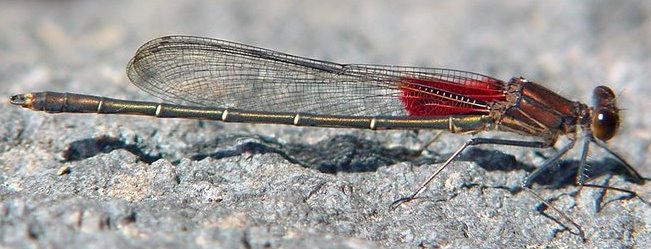Eastern Hognose Snake Heterodon platirhinos
Illegal to harass, kill, collect or possess in MA.
The sun broke through the early morning clouds as Kiana Koenen and I searched the ground for signs of the young snakes discovered the day before by friends Mike Phillips and his wife Anita. Six Eastern Hognose Snakes were found sunning themselves along this well traveled
Quabbin route. We knew at least one of the tiny snakes had been inadvertently struck and killed by a passing bicyclist or pedestrian. The snake’s cryptic coloration and habit of freezing to hide make them susceptible to human movement and any of a host of potential predators. We had returned to the area early to see if the young snakes were using the road’s heat to warm themselves and if there was something we could do to prevent additional fatalities.
Searching closely through the roads shoulder they suddenly came into focus 3 young snakes perhaps 6 inches in length were slowly moving in the patchy grass. Carefully looking into the grass at the edge of the shoulder making sure our feet were on the roads edge where we could continually watch that we not step on an unsuspecting Hognose we counted 5 snakes within several square feet. We searched up and down the shoulder and when finding no other snakes we returned to the spot and now counted 7 snakes.Pulling a couple 5-gallon plastic pails for seats from the back of the pickup, we stationed ourselves on the road and waited to see where these snakes were coming from. A movement in the grass showed yet another tiny snake pushing its way in the morning light. The sand encrusted skin is evidence of its sandy birthplace.
We sat and chatted watching the unfolding spectacle. A call to update herpetologist and friend Peter Mirick at
MassWildlife helped enlighten us about some of the behavior we were witnessing. We sat and watched the clouds overtaking the sky bringing a chill to the air. A few minutes later a patch of blue regained the day beaming bright morning sun on the roadside and us. Almost immediately movement caught our attention as another snake appeared from below ground, than another and another. Fourteen in all! We watched as they moved in fits and starts out into the undergrowth shedding their skins along the way.
![]()
Could our young Hognoses be the offspring of this adult observed within 200 feet of our location in August 2001? We may never know but we hope that this is a good start for this generation of snakes. I have seen in these last 2 days 20 Hignose snakes which more than triples all the sightings of this species I've had in my lifetime. Thanks again to Mike and Anita for the timely phone call.
This young snake looks ready to take on the world
I would be interested to recieve images and location information on snakes in the Central Massachusetts. Hognose Snakes Heterodon platirhinos is of particular interest as they are now hard to find in many historic locations. Remember to always report observations of state listed species to
MNHESP
dave@dhsmall.net
http://dhsmall.blogspot.com/
.jpg)


![Reblog this post [with Zemanta]](http://img.zemanta.com/reblog_e.png?x-id=54d60380-e028-44d5-b228-797917d07916)

![Reblog this post [with Zemanta]](http://img.zemanta.com/reblog_e.png?x-id=9341234b-b0a2-4560-9ba1-9e959d266007)
![Reblog this post [with Zemanta]](http://img.zemanta.com/reblog_e.png?x-id=a6b1bec7-0c0f-4a30-b3e7-43218322da5d)
